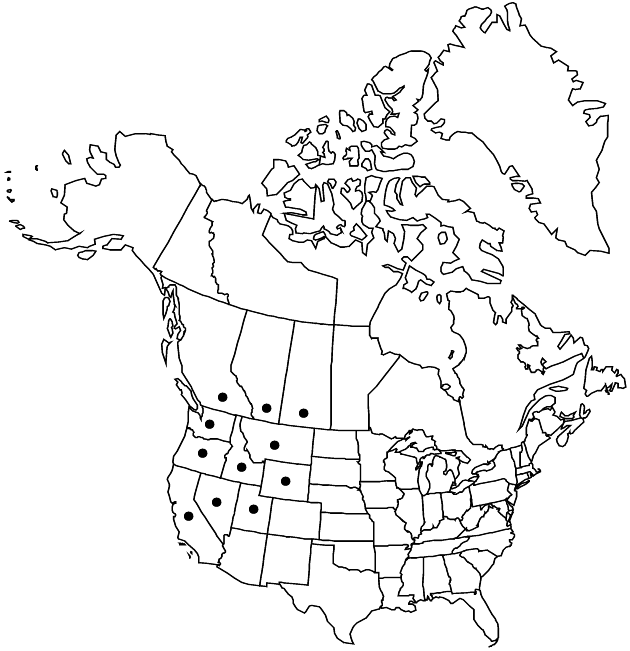Arnica sororia
Ottawa Naturalist 23: 213. 1910.
Plants 15–50 cm. Stems (1 or relatively few) simple or branched. Leaves 3–6 pairs, crowded toward stem-bases (axils lacking tufts of brown wool); petiolate (petioles, at least basal, narrowly winged); blades (with 3 or 5, prominent, subparallel veins) oblanceolate to narrowly oblong, 3.5–14.5 × 0.6–2.4 cm, margins usually entire, rarely denticulate, apices obtuse, faces uniformly hairy, stipitate-glandular. Heads 1–5. Involucres hemispheric. Phyllaries 13–20, usually narrowly, sometimes broadly, lanceolate. Ray-florets 9–17; corollas yellow-orange. Disc-florets: corollas yellow; anthers yellow. Cypselae brown, 3.5–5 mm, densely hirsute, sometimes sparingly glandular as well; pappi white, bristles barbellate. 2n = 38.
Phenology: Flowering May–Jul.
Habitat: Prairies and grasslands to montane conifer forests
Elevation: 500–1500 m
Distribution

Alta., B.C., Sask., Calif., Idaho, Mont., Nev., Oreg., Utah, Wash., Wyo.
Discussion
Selected References
None.